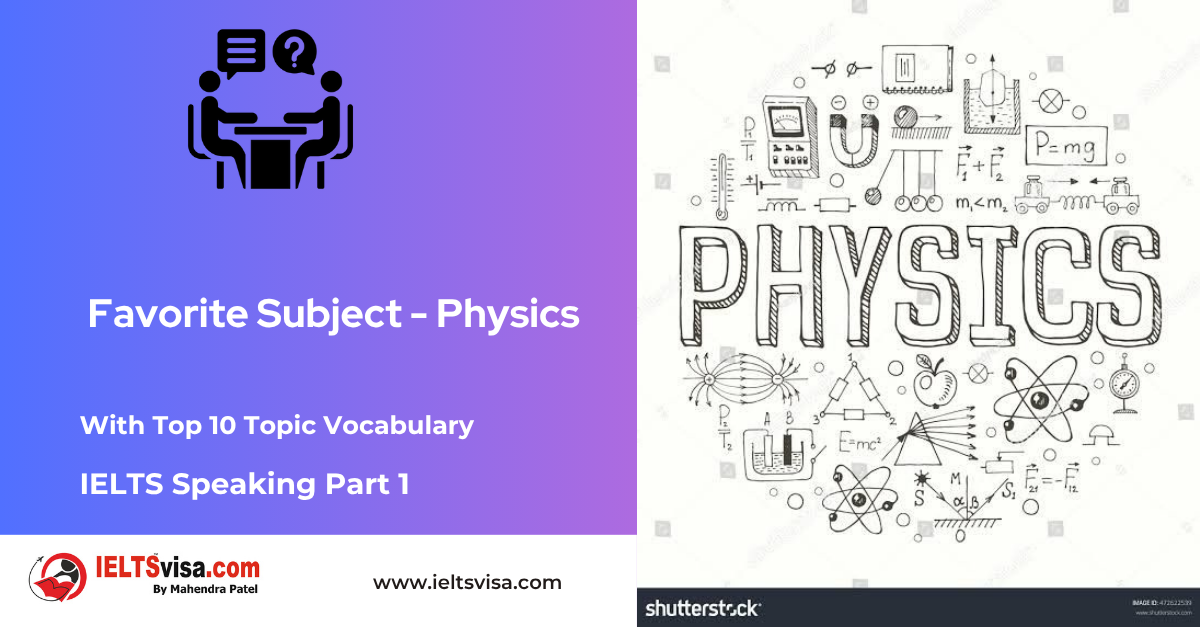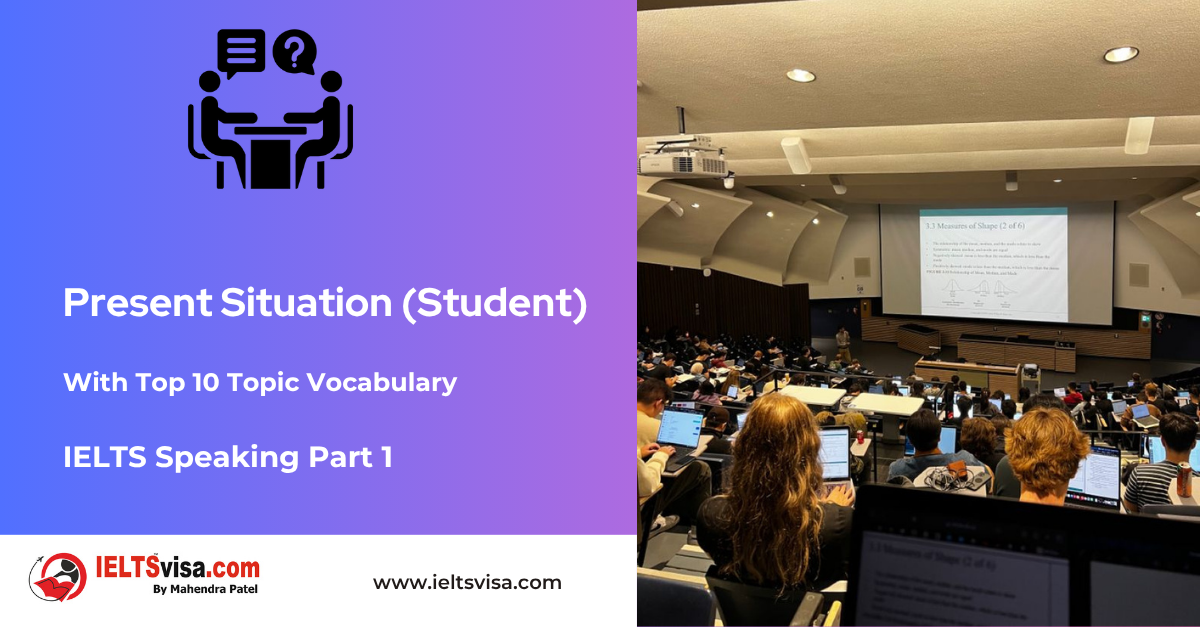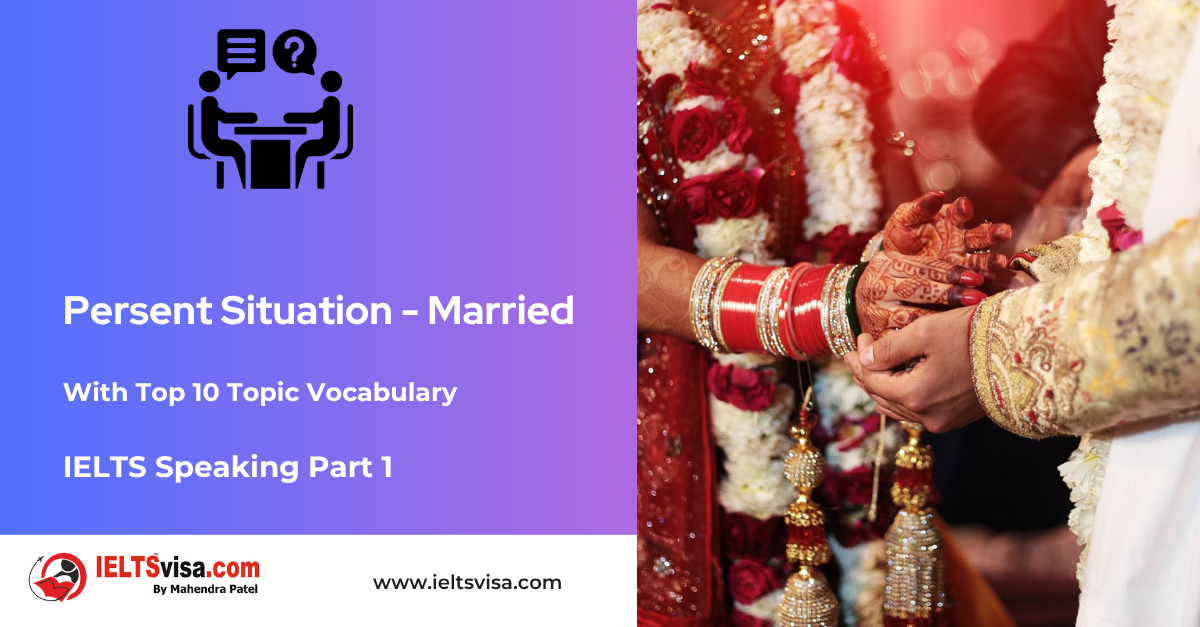Uses of Modal and Special Modal Auxiliaries
Grammar for IELTS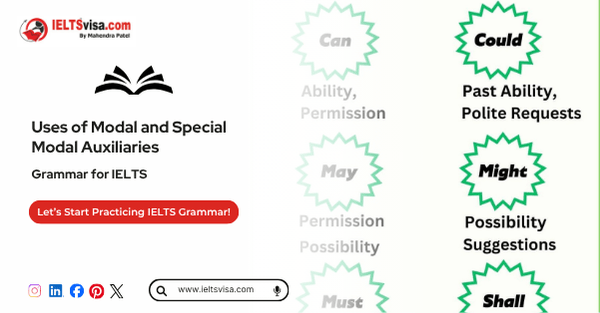
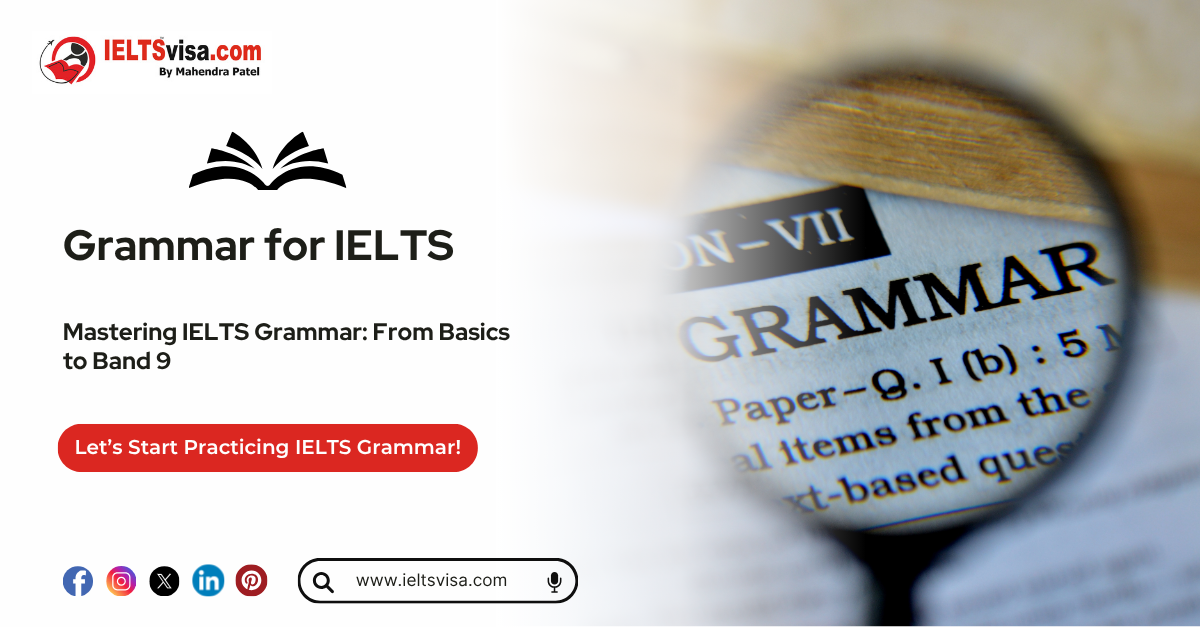
Uses of Modal and Special Modal Auxiliaries
Understanding auxiliary and modal verbs is essential for effective communication in English. This guide simplifies these concepts to help students and non-native English speakers learn them easily.
What Are Auxiliary Verbs?
Auxiliary verbs, also known as helping verbs, work alongside main verbs to give additional meaning to a sentence. They help form tenses, moods, and voices, making sentences more meaningful and grammatically correct.
Definition:
An auxiliary verb is “a verb such as be, do, and have used with main verbs to show tense, and to form questions and negatives” (Oxford Learner’s Dictionary).
Common Auxiliary Verbs:
-
- Be: am, is, are, was, were
- Have: have, has, had
- Do: do, does, did
Examples:
1. “I am reading a book.” (Present continuous)
2. “She has completed her homework.” (Present perfect)
3. “Do you like ice cream?” (Question formation)
What Are Modal Verbs?
Modal verbs are a type of auxiliary verb that express conditions such as possibility, ability, necessity, or permission. They modify the meaning of the main verb, adding additional information about the likelihood or necessity of an action.
Definition:
Modal verbs are auxiliary verbs like can, should, and must that indicate possibility, intent, ability, or necessity.
Common Modal Verbs:
-
- Can, could
- May, might
- Shall, should
- Will, would
- Must, ought to
Examples:
1. “I can swim.” (Ability)
2. “You must finish your homework.” (Necessity)
3. “It might rain today.” (Possibility)
1. Altering the Tense Auxiliary verbs help change the tense of the main verb in a sentence. Examples:Using Auxiliary Verbs
-
- Present Continuous: “She is writing an essay.”
- Past Perfect: “They had eaten before the show started.”
- Future Perfect: “I will have completed the project by tomorrow.”
-
- “The cake was baked by my mom.”
- “The letters have been written by the students.”
- “The task will be completed by the team.”
-
- “Do your homework now.” (Imperative)
- “Did you complete the assignment?” (Interrogative)
Using Modal Verbs
1. Expressing Ability
-
- “She can play the piano beautifully.”
- “He could solve the puzzle when he was younger.”
2. Indicating Permission
-
- “You may leave early today.”
- “Can I borrow your book?”
3. Showing Necessity
-
- “You must wear a helmet while riding a bike.”
- “They have to complete the project by tomorrow.”
4. Expressing Possibility
-
- “It might snow tonight.”
- “She could win the race if she tries hard.”
5. Making Suggestions
-
- “You should try the lasagna.”
- “We ought to visit the museum.”
6. Forming Hypothetical Situations
-
- “If I were you, I would accept the job offer.”
- “She could have helped if she had been there.”
Auxiliary and Modal Verbs in Action
|
Verb Type |
Verb |
Usage |
Example |
|
Auxiliary |
Be |
Continuous tense |
“He is studying for his exam.” |
|
Auxiliary |
Have |
Perfect tense |
“She has finished her work.” |
|
Auxiliary |
Do |
Questions or negatives |
“Do they like pizza?” |
|
Modal |
Can |
Ability |
“I can ride a bike.” |
|
Modal |
Must |
Necessity |
“You must complete the assignment.” |
|
Modal |
Should |
Advice |
“You should visit the doctor.” |
|
Modal |
Might |
Possibility |
“It might rain later.” |
Practice Exercise: Fill in the Blanks
Fill in the blanks using the correct anomalous verb:
1. She ______ studying for the test. (Auxiliary verb: be)
2. You ______ finish your homework before going out. (Modal verb: necessity)
3. ______ he completed the project on time? (Auxiliary verb: do)
4. They ______ be at home now. (Modal verb: possibility)
5. We ______ been waiting for hours. (Auxiliary verb: have)
Answers:
1. is
2. must
3. Did
4. might
5. have
Frequently Asked Questions
Q1: What are auxiliary verbs?
Auxiliary verbs are helping verbs like “be,” “have,” and “do” used with main verbs to form tenses, moods, or voices.
Q2: What are modal verbs?
Modal verbs are auxiliary verbs like “can,” “must,” and “should” that express ability, necessity, permission, or possibility.
Q3: Can auxiliary and modal verbs be used together?
Yes, modal verbs can combine with auxiliary verbs to form complex sentences.
Example: “She might have been sleeping.”
Q4: What is the difference between auxiliary and modal verbs?
Auxiliary verbs form grammatical structures, while modal verbs add meaning, such as obligation, ability, or possibility.

Our Books
Master IELTS Speaking Part 1
IELTS Writing Task 1 Book
IELTS Writing Task 2 Book
Practice IELTS Other Modules
IELTS Listening
The IELTS Listening test assesses how well you can understand spoken English in various contexts. It lasts about 30 minutes and is divided into four sections with a total of 40 questions. The listening tasks become increasingly difficult as the test progresses.
IELTS Academic Reading
The IELTS Academic Reading section assesses your ability to understand and interpret a variety of texts in academic settings. It is designed to evaluate a range of reading skills, including skimming for gist, reading for main ideas, reading for detail, understanding inferences, and recognizing a writer's opinions and arguments.
IELTS Speaking
The IELTS Speaking test assesses your ability to communicate in English on everyday topics. It lasts 11-14 minutes and consists of three parts: introduction, cue card, and a discussion based on the cue card topic.
IELTS General Reading
IELTS General Reading tests your ability to understand and interpret various types of texts. Here are some key areas and types of content you can expect to encounter in the reading section, along with tips for effective preparation.
IELTS Academic Writing Task 1
In IELTS Academic Writing Task 1, you are presented with a visual representation of information, such as graphs, charts, tables, or diagrams, and you are required to summarize, compare, or explain the data in your own words.
IELTS General Writing Task 1
In IELTS General Writing Task 1, you are required to write a letter based on a given situation. The letter can be formal, semi-formal, or informal, depending on the prompt. Here’s a breakdown of the key components to include in your letter
IELTS Academic Writing Task 2
In IELTS Academic Writing Task 2, you are required to write an essay in response to a question or topic. Here’s a guide to help you understand the essential elements of this task
IELTS Exam Tips
To succeed in the IELTS exam, practice regularly, familiarize yourself with the test format, improve your vocabulary, develop time management skills, and take mock tests to build confidence.
Grammer for IELTS
Grammar is the foundation of effective communication in English. Understanding tense usage, subject-verb agreement, and sentence structure enhances clarity and coherence in writing and speaking.
Vocabulary for IELTS
Vocabulary plays a crucial role in the IELTS (International English Language Testing System) exam, especially in the Speaking and Writing sections. Here’s an overview of why vocabulary is important and how it impacts your performance
RECENT IELTS SAMPLES QUESTIONS AND ANSWERS
IELTS Speaking Part 1 – Favourite Sujbect – Physics
IELTS Speaking Part 1 - Favourite Sujbect - Physics Q: What is your favourite subject? A: My favourite subject...
IELTS Speaking Part 1 – Present Situation (Student)
IELTS Speaking Part 1 - Present Situation (Student) Q1: Are you a student or do you work?A: I’m a full-time...
IELTS Speaking Part 1 – Present Situation – Employee – as an International Student and Social Worker
IELTS Speaking Part 1 - Present Situation - Employee - as an International Student and Social Worker Q1: Are...
IELTS Speaking Part 1 – Persent Situation – Employee- as an Electric Engineer
IELTS Speaking Part 1 - Persent Situation - Employee- as an Electric Engineer Q1: What do you do for a...
IELTS Speaking Part 1 – Persent Situation – Employee – as an Software Engineer
IELTS Speaking Part 1 - Persent Situation - Employee - as an Software Engineer Q1: What do you do for a...
IELTS Speaking Part 1 – Persent Situation – Married
IELTS Speaking Part 1 - Persent Situation - Married Q1: Are you married?A: Yes, I am married. My spouse and I...

